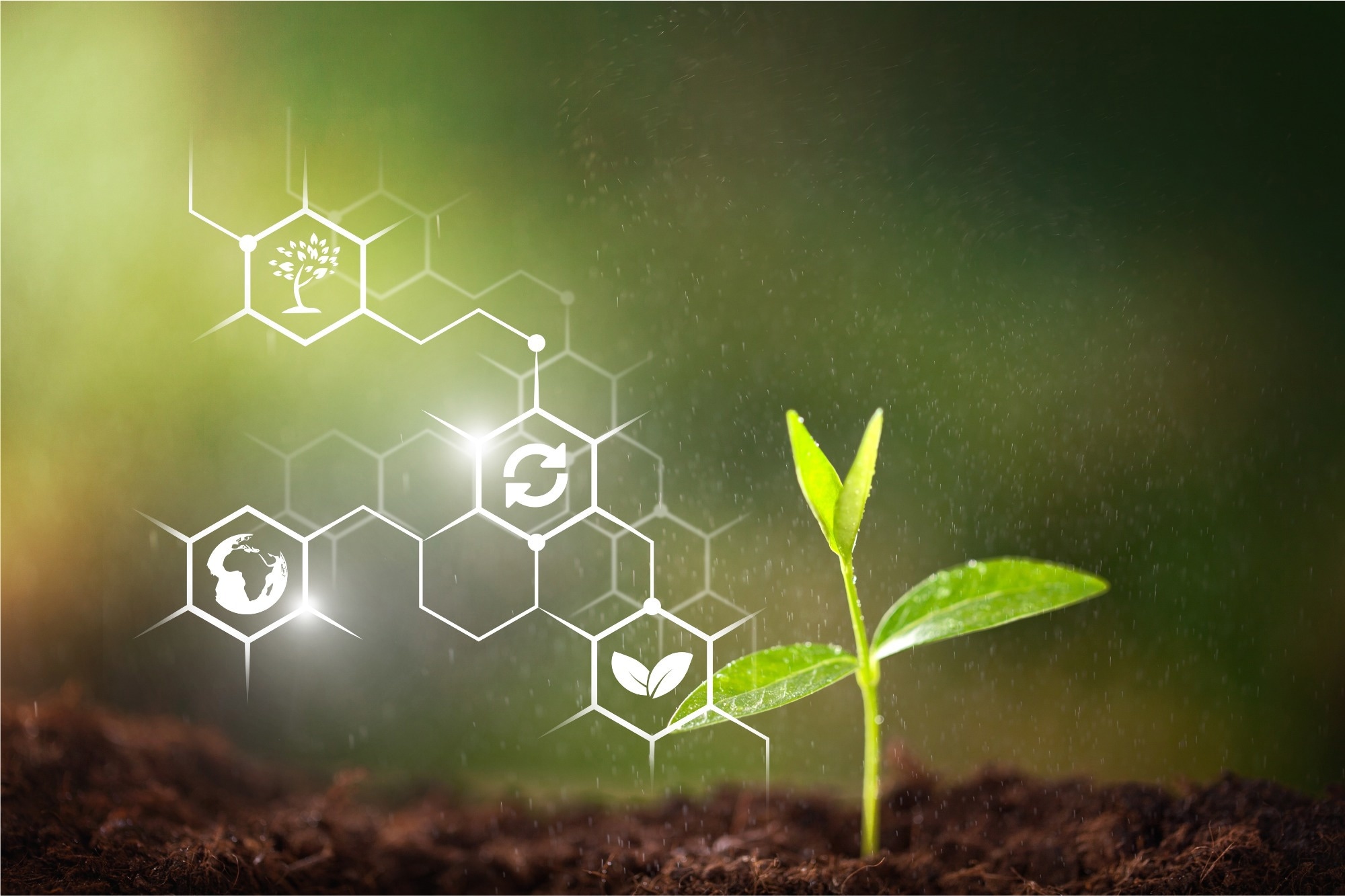Machine learning (ML) and artificial intelligence (AI) in agriculture offer environmental benefits and cost savings, especially in developing countries such as Côte d'Ivoire. In a recent paper published in the journal Sensors, researchers created models using You Only Look Once (YOLO)v5m for plant and pod detection via mobile images. It shows promise in distinguishing healthy from damaged crops.
 Study: AI-Powered Sustainability in Côte d'Ivoire's Agriculture. Image credit: Billion Photos/Shutterstock
Study: AI-Powered Sustainability in Côte d'Ivoire's Agriculture. Image credit: Billion Photos/Shutterstock
Background
The Anthropocene denotes a geological epoch initiated by humanity's discernible global impact on Earth's ecosystems. Anthropological climate change (ACC) is a direct result of socio-economic activities. Greenhouse gas (GHG) emissions, primarily from fossil fuels and agriculture, drive global warming. ACC intensifies droughts, rainfall extremes, sea-level rise, and temperature shifts, impacting agriculture and coastal regions. It disproportionately affects vulnerable populations, with adverse economic consequences.
Mitigation and adaptation efforts using low-cost AI, satellite data, and open-source tools are vital. Addressing climate change requires local and regional cooperation. Côte d’Ivoire, a major cocoa producer, faces climate threats to its fragile cocoa economy. Models for cocoa health monitoring and water storage forecasting offer affordable solutions. Combating climate change in agriculture demands a multidimensional approach involving collaboration, open data, and ML techniques, targeting local farmers and policymakers alike.
Environmental Impact on Cocoa plantations in Côte d'Ivoire
Côte d'Ivoire's cocoa plantations drive deforestation, necessitating tools to detect resource depletion for sustainable policies. GHG emissions in Africa result from deforestation, agriculture, methane from farming, and N2O from fertilizers. Africa has contributed significantly to increased emissions since 1990, impacting rainforests and ecosystems. Fundamental research is essential for ecological understanding. Accessible data sources such as the European Center Medium Weather Forecast (ECMWF) and Copernicus support analysis.
Precision agriculture with AI, often focusing on return on investment (ROI), should consider social dimensions, especially in low-income regions such as Côte d’Ivoire. Leveraging open-source tools and mobile phone imagery for crop assessment can reduce costs, fostering sustainable practices. This approach addresses socio-technical transition, reshaping regions economically and socially. The current study employs YOLOv5m for cocoa pod identification and remote sensors for water resource monitoring and land management, utilizing convolutional neural networks (CNN) and fully connected networks (FCN) with a U-Net-like architecture.
Open-source Innovation and IoT Sensors
Researchers utilized open-source tools and methods for ML in agriculture, emphasizing open data, open hardware, and open software communities.
Open-Source Tools: Open-source tools in smart agriculture offer innovation potential through reusable software under open licenses. A collaborative community of experts enhances the trustworthiness and explainability of knowledge products, fostering innovation and cost savings for businesses.
Pervasive IoT Systems: Implementing IoT systems relies on data communication and efficient sensor data ingestion. Open-source projects such as Apache Kafka and databases such as InfluxDB facilitate data handling. Various communication protocols serve diverse network needs.
Arduino Sensors in Agriculture: Arduino sensors play a pivotal role in modern agriculture by monitoring soil moisture, temperature, humidity, light, weather, crop health, pest detection, irrigation, crop growth, livestock, and automated greenhouse systems. They offer affordability and accessibility for data-driven farming.
The Pipeline of Knowledge Discovery from Data: The knowledge discovery process involves data collection, storage, merging, transformation, and analysis. ML methods, such as deep neural networks and ensemble methods, play roles in feature selection, transformation, and model training for predicting physical phenomena or target variables.
Researchers performed two different tasks using open-source models:
Task One (Cocoa Pods Classification Model): Detecting cocoa pod quality and diseases is crucial. YOLOv5m, an improved deep neural network, was used with open-source labeled datasets. Data preprocessing included interpolation and normalization.
Task Two (Côte d’Ivoire water anomalies network): Predicting anomalies in the datasets of water resources using gravity recovery and climate experiment (GRACE) and global climate and weather European (ERA5) was explored. Models such as a vanilla CNN and CIWA-net with input feature scaling were developed. The architecture included convolutional layers with zero-padding and stride adjustments and transposed convolutions for upsampling.
These methods illustrate the application of open-source tools and data in agriculture for knowledge discovery, crop health monitoring, and water resource prediction.
Task Outcomes and Model Evaluation
In Task 1, the YOLOv5m model excels at identifying healthy fruits with 98 percent accuracy but struggles to distinguish between diseases. While a more complex model could improve discrimination, the primary aim here is to create a smartphone-friendly tool that prioritizes speed and lightweight functionality. The confusion matrix highlights the model's proficiency in detecting healthy fruits, but its tendency to confuse Monilla and Fito classes approximately 30 percent of the time. This necessitates more comprehensive fruit analysis and immediate action in cases of disease detection.
In Task 2, the CIWA-net prediction model is evaluated using mean squared error (MSE) and mean absolute error (MAE) metrics across various input scenarios. CNN models show signs of overfitting, while CIWA-net benefits from additional input channels.
Thus, these models offer potential applications as they effectively detect seasonality and variations in spatial distribution, making them valuable tools in practical scenarios.
Conclusion
In summary, this study addresses climate change challenges in countries such as Côte d’Ivoire, which relies heavily on agriculture. It employs cost-effective AI models and open-source tools to aid farmers and policymakers in sustainable land and water management. Further, the study discusses YOLOv5m's role in identifying healthy cocoa plants via mobile images, supporting cocoa production inexpensively. It also introduces CIWA-net for TWSA forecasting, comparing it to a standard CNN model. Both models offer promise for aiding climate-resilient agriculture decisions.